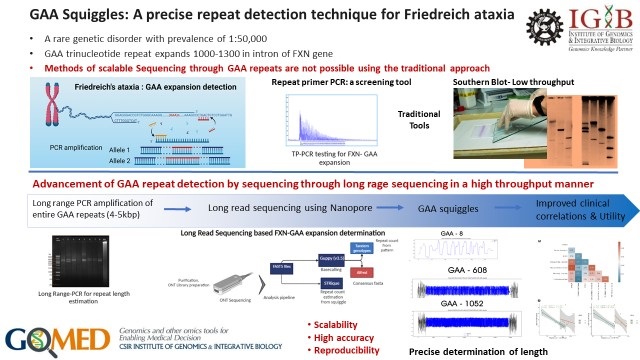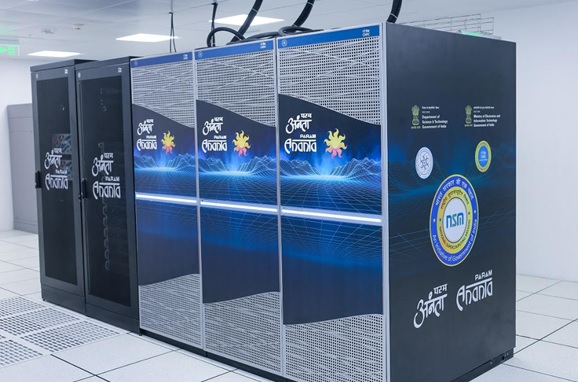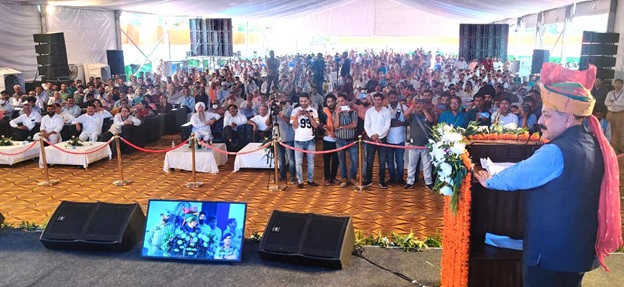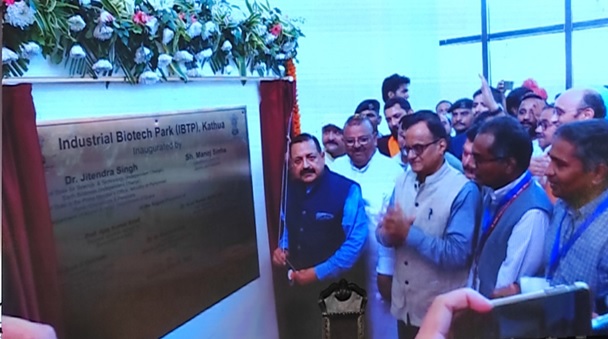
Friedreich's ataxia (FRDA) is a hereditary disorder causing both neurological and movement-related problems. Researchers from the Genomics and Molecular Medicine, CSIR-Institute of Genomics and Integrative Biology (CSIR-IGIB), and Neurology Department, Neurosciences Centre, All India Institute of Medical Sciences (AIIMS), New Delhi, have accurately estimated the number of DNA trinucleotide (GAA) repeats, taking a nanopore sequencing-based approach. It can enable more effective resolution of genotype-phenotype correlations in FRDA patients.
There is a correlation between the age of the disease onset and this GAA repeats. Higher the GAA repeats (~1000), earlier the onset (around 10-15 years), and lesser the GAA repeats in abnormal range, (~100), late the onset (~50 years). Precise detection of expanded GAA repeat count is crucial for understanding the contribution of FXN-gene defect to the development of clinical variability.
“The general screening method for FXN-GAA repeats adopted by laboratories across the globe is doing a short PCR followed by a GAA repeat specific primed PCR method. For the length estimation, southern blot is deployed. The latter one is a low throughput and method-intensive approach. Until now, no research has explored a high-throughput method to determine the precise sequence of GAA repeats,” informs the lead researcher Dr Mohammed Faruq, while speaking to India Science Wire.
Friedreich's ataxia (FRDA) is a hereditary disorder causing both neurological and movement-related problems. Researchers from the Genomics and Molecular Medicine, CSIR-Institute of Genomics and Integrative Biology (CSIR-IGIB), and Neurology Department, Neurosciences Centre, All India Institute of Medical Sciences (AIIMS), New Delhi, have accurately estimated the number of DNA trinucleotide (GAA) repeats, taking a nanopore sequencing-based approach. It can enable more effective resolution of genotype-phenotype correlations in FRDA patients.

Typically, every individual has GAA repeats in FXN in the range of 7-34. However, if it crosses length 66 and above, it leads to abnormalities in FXN gene transcription and a reduction in FXN protein production. In FRDA patients, both copies of the genes carry the FXN-GAA expansion, therefore none of the FXN copies produces FXN protein. However, each parent carries a single copy defect and is unaffected and does not show symptoms.
The present study has established a long-range PCR protocol to amplify the GAA repeat region followed by long-range sequencing (3rd generation) using the Oxford Nanopore Technologies MinION platform. Their approach successfully amplified GAA repeat regions ranging in length from 120 to 1100 repeats with an average coverage of around 2600 times.
“Our study sheds light on the association between late-onset FRDA and disrupted GAA sequences. This will also help predict the disease course, prognosis, and its management. With our protocol, it is possible to screen up to 96 samples/flowcell in less than 24 hours. This method is clinically adaptable and can be scaled up for routine diagnostic procedures. Besides, the model can be conveniently applied to other repeat-mediated disorders as a point-of-care diagnostic,” Dr Faruq explains.
The onset of FRDA typically happens around the juvenile age (10-15 years). The symptoms are walking imbalance (gait ataxia), movement incoordination (ataxia), slurring of speech (Dysarthria), Scoliosis (curvature in spine), and cardiomyopathy (thickened heart wall). The age of onset may vary from a very early age (before puberty) to as late as 62 years.
Besides Dr Mohammed Faruq, the study team comprised Bharathram Uppili, Pooja Sharma, Istaq Ahmad, Shweta Sahni, Vivekanand Asokachandran, Anil B Nagaraja, Achal K Srivastava, and Mohammed Faruq. Researchers have published the findings in the journal Brain Communications. The study has been supported by the Department of Biotechnology (DBT), the Indian Council of Medical Research (ICMR), and the CSIR-IGIB.
India Science Wire
ISW/SM/IGIB/GAA/Eng/18/04/2023





